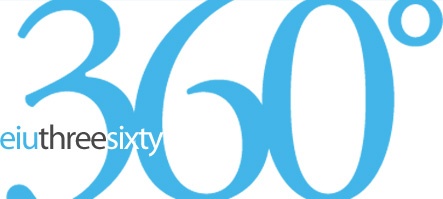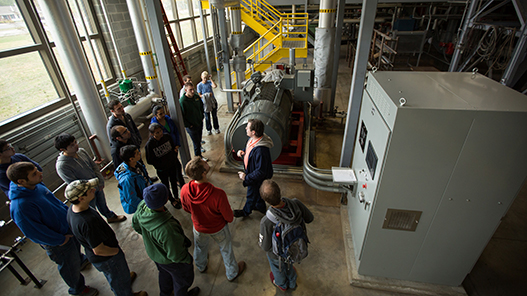
Like other biology professors, when Thomas Canam stands in front of his students lecturing about sustainable energy options, he employs real-life examples to further discussion and class involvement.
But, unlike other professors, Canam teaches within one of his prime examples: EIU’s Renewable Energy Center, one of the largest biomass energy projects within a university in the country.
Canam, who teaches Bioenergy and Bioresources, said his course is the first ever offered within the plant. The class, which focuses on everything from how to make biodiesel to the gasification process itself, is a requirement for the new master’s in sustainable energy program.
The program, which officially started in Spring 2013, enhances students’ knowledge in the growing field of researching and locating alternative energy sources. Students receive a mixture of hands-on learning and theory inside the classroom, internships and research practicums.
Graduate coordinator Peter Ping Liu said the program is one of a kind because it encompasses 10 different departments: biological sciences, technology, English, business, economics, political science, physics, chemistry, geology/ geography and communication studies.
The program is preparing students to be practical managers of a plant focused on bioenergy sources, Liu said.
Liu and Canam said unlike other programs, it prepares students to work with people and be able to communicate with others, which is essential when managers are trying to articulate complicated processes to the public or try to receive funding from the government.
“We have 10 different departments contributing on campus,” Canam said. “The whole point is to produce a graduate who is thoughtful of all different aspects of sustainable energy.”
When teaching, Canam focuses on the smaller picture, lecturing about what is biomass chemically. At the same time, he looks at the overall picture.
“I try to take a bigger picture-view of how biomass can be used for bioenergy,” he said.
For example, Canam does not want his students to simply regurgitate information. Instead, he will ask them one hypothetical question for exams, such as “If the state of Illinois has come to you because they want to build a sustainable energy program, what would you say to them?”
“We want them (our students) to think about all different aspects,” Canam said. “I think that is really good of a graduate program to make them think more.”
The course is taught in the conference room of the center; it was not designed as a classroom, but Canam was determined bring his class to the REC. After asking around, Canam finally went to the president to turn the room into an official classroom. Now, the conference room has an official classroom number — RENG 1001.
“It makes it more real, not abstract,” he said. “You are actually sitting in the facility.”
Canam’s course is only one example of the classes offered through the program, which gives these master's students a wide variety of skills and perspectives.
Students David Stack and George Cernetig are taking Canam’s class and a communication studies class called, Science and Technical Communication, where they are learning how to communicate effectively.
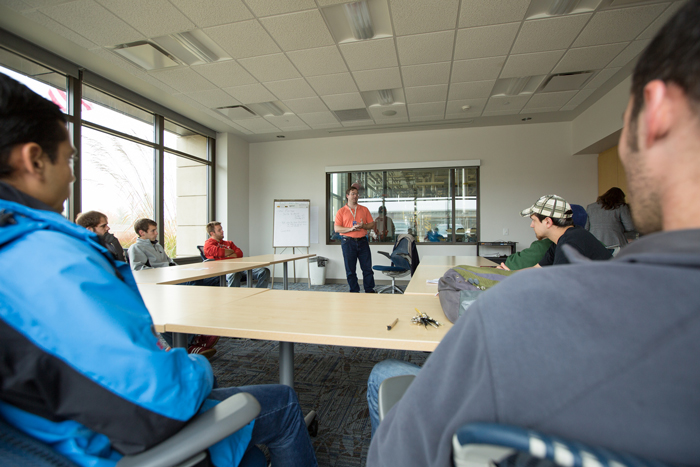 |
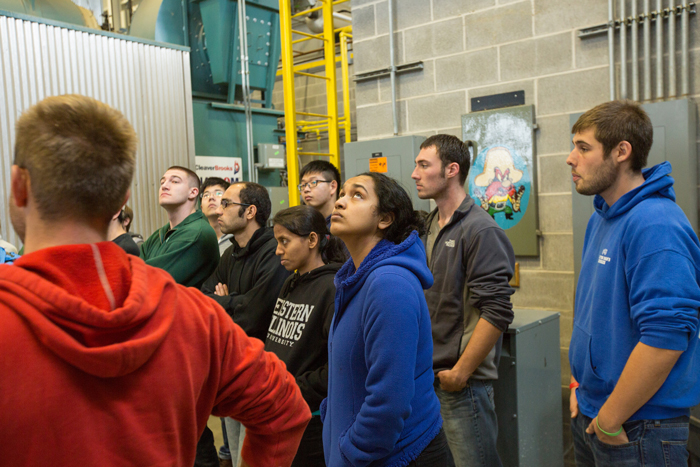 |
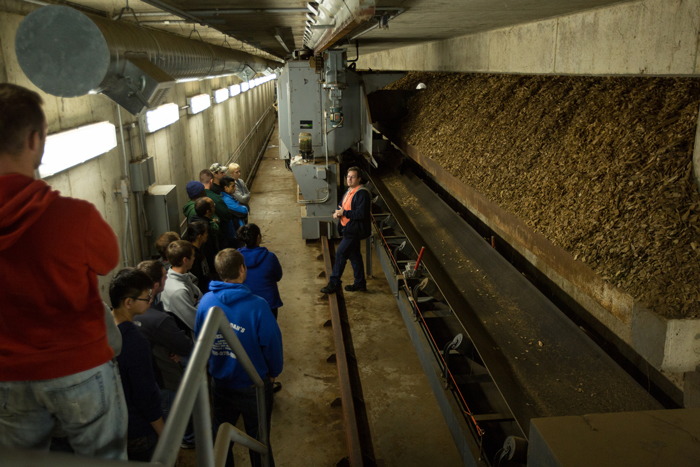 |
Communication Studies professor Brian Sowa said the class is focused on teaching students how to be a spokesperson.
They are learning persuasive communication tools, which will be essential when they are managers of a plant, Sowa said.
Student David Conwell agrees that he is learning how to be a good communicator, and believes the program offers him the opportunity to think critically through many different disciplines.
After graduating from Eastern with a physics degree, Conwell looked into pursuing a degree in sustainable energy, but found few options offered to students in the country except EIU’s program.
In his undergraduate, he said he always thought like a physics major, but now he is learning the different perspectives of how others think.
The program currently has 12 students enrolled, according to Liu.
The idea for the program began after Eastern’s decision to build a renewable energy center to replace the old steam plant, Liu said. After the center opened its doors in October 2011, the university realized the need to start a program based around the center and to build a place of research for students to look into sustainable energy research.
As of Spring 2013, workers broke ground on the new research facility, Center for Clean Energy Research and Education, which will be a place for student’s research in learning in conjunction with the center.
Classes like Canam’s will be able to conduct research and have their labs over at the center instead of in traditional classroom where they are currently.
Canam said the university’s size is perfect for this interdisciplinary program because departments are willingly to work together, but at the same time Eastern has a good research footprint to make a difference.
“I honestly have not seen anything like this program,” Canam said.
In 2012, Liu received a grant for almost $200,000 to research other biomass energy sources with his students. The grant, received by National Science Foundation, was called "Enhancing Undergraduate Education Through Student-Led Research in Biomass Renewable Energy." He also received two grants from Illinois Sustainable Technology Center totaling close to $27,000.




